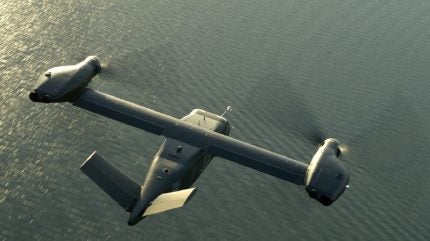
Bell Textron Inc. has announced that the US Army has approved the Milestone B decision for the Future Long Range Assault Aircraft (FLRAA), initiating the Program of Record on 5 August 2024.
The decision marks the next phase in the development of the aircraft, with the potential to double the speed and range of current military helicopters.
Financial and budgetary aspects
This approval launches the programme into the engineering and manufacturing development phase, a step that will see the creation and testing of FLRAA prototypes, ultimately leading to the production of a next-generation assault aircraft.
The Army’s FY2024 budget request includes just over $1bn for FLRAA to begin production of six Engineering and Manufacturing Development prototypes, as highlighted by GlobalData’s intelligence on the US defence market.
The Milestone B decision is a juncture in the capability acquisition process, signifying the formal commencement of the weapon system’s programme of record. This achievement follows years of collaboration between Bell and the US Army to align the aircraft’s design with the Army’s requirements.
The decision also emphasises the progress made through a preliminary design review, which ensured the aircraft’s design integrity and alignment with mission-specific demands.
Bell’s Senior Vice President and FLRAA Programme Director Ryan Ehinger described the milestone as a historic moment. “Now that the programme has Milestone B approval, the course is set for delivering transformational capability to the warfighter,” Ehinger stated, highlighting the focused efforts of the FLRAA team as they embark on the subsequent development phase.
Bell Textron strengthened its FLRAA programme with partnerships and advancements. CAE USA, collaborating with Bell since October 2021, provides training solutions, including simulators and maintenance training devices, to support the V-280 Valor’s deployment.
In addition, GE Aerospace is developing a Common Open Architecture Digital Backbone for the FLRAA, enhancing the aircraft’s integration capabilities and performance.
Replacement of the Black Hawk fleet
The FLRAA project aims to replace the ageing Black Hawk fleet. Leveraging tiltrotor technology and digital engineering approaches, the new aircraft is designed to fly twice as fast and twice as far as existing helicopters, offering speed, range, and operational flexibility. Its open architecture is also expected to ensure long-term adaptability and integration with future technologies.
Sikorsky Aircraft, in collaboration with Boeing, filed a formal protest against the US Army’s decision to award the FLRAA contract to Bell Textron’s V-280 Valor. They argued that the decision process was inconsistent and that their SB>1 Defiant X proposal was unfairly evaluated. The Government Accountability Office reviewed and subsequently denied Sikorsky’s protest in April 2023, upholding the Army’s decision based on a technical evaluation that found Sikorsky’s proposal lacking architectural detail.
Following the Army’s contract award in December 2022, Bell has invested in new facilities and manufacturing processes to support the FLRAA’s development. This approach is intended to drive efficiency in cost, schedule, and performance as the programme moves into the EMD phase.
Colonel Jeffrey Poquette, FLRAA Project Manager, emphasised the importance of this milestone, acknowledging the years of work by the FLRAA team and their partners. “We are poised to deliver a truly transformational aircraft for the Army,” said Poquette, noting that the journey ahead will involve designing, constructing, and testing FLRAA prototypes.
As the EMD phase begins, eyes will be on Bell to see if this aircraft can meet the Army’s expectations.




